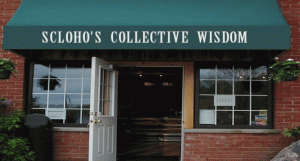Being a grandparent is much different than it was 40 years ago when I was a teen and my grandmother was alive.
It’s also much different than 20 years ago when my parents were grandpa and grandma.
I became a step-grandpa when I married in 2001. My wife’s son, had a son when he was 17 and now most of the rest of our 5 kids have kids too. Eight grandkids at last count and my wife and I don’t fit the stereotypes of our parents and grandparents of what it’s like to be at this life stage.
Mediapost has some wisdom on how to market to the Baby Boomer Grandparents:
Let’s face it. Psychologist Abraham Maslow never wanted to be a marketer. In his work, Toward a Psychology of Being, he describes the 13 personality attributes of the self-actualizing person. Often depicted as the top of the pyramid on the Hierarchy of Needs, “Self-actualization” is the realization of one’s full potential, with a focus outside of self. 
Maslow could not have known the power of his work in shaping our approach to understanding and communicating with older adults. In our research with grandparents, the birth of the first grandchild signals the shift toward “actualization.” They describe it as a time when the future seems sharper. They feel their own mortality and grapple with the idea of the family continuing when they are gone. Relationships take on more meaning, as the sense of selflessness takes over.
These attributes are so important to creating strategies that engage consumers that we are going to discuss them all – a few at a time – and specifically as they relate to the life stage of grandparenting. Along with caregiving and empty-nesting, grandparenting represents a Boomer life stage with the most “consumer moments” and an openness to trying new products and services that they may have not considered in the past.
Here are the first four of Maslow’s attributes and how they relate to grandparents:
1. Superior perception of reality. Mature adults see things that younger consumers cannot see. Advertising claims are viewed with a much more discerning eye, and a lifetime of consumer experiences. Grandparents, in particular, are perceptive and sensitive about communications that ring false. In our research this was translated to seeing images of “real families” in terms of household makeup, ethnicity, and lifestyles. They have seen the world change during their lifetime.
2. Increased acceptance of self, others and nature. Older adults are more mellow, contrary to the stereotype of the hyper-focused Boomer. They appreciate the subtle humor and ironies of daily life.
For grandparents, this is reflected in a sense of greater enjoyment of their grandchildren versus their own children. They are more relaxed and present than they were as parents. Grandfathers, in particular, observe this, saying they were busy working when their children were small, so they have a “do-over” with their grandchildren.
3. Increased spontaneity. There is a sense of the importance of each day, and being present. While as young parents they were more focused on schedules and planning, as grandparents they can be more spontaneous with their grandchildren and have a “seize the moment” approach. This can be disconcerting to their adult children whose memories may center on workaholic parents who lived by their Filofax (a pre-BlackBerry device, now known as a smartphone).
4. Increase in problem-centering. There is a focus on problems beyond themselves; they engage in authentic problems. Grandparents report that they have an increased desire to leave the world a better place for this generation of grandchildren. They volunteer, give to charitable causes and support organizations and principles with this mission. They may extend this focus to healing the family and putting old issues in the past for future generations.
To effectively market product and services to older adults, it is critical to understand the psychology of older adults and to know why the things we observe in research are so. We will visit more of Maslow’s points over time. This understanding can mean the difference between talking at older adults and engaging with them in a conversation.
Bill Bernbach, who is not quoted much anymore, once said, “Human nature hasn’t changed for a billion years. It won’t even change in the next billion years. Only the superficial things have changed. It is fashionable to talk about the changing man. A communicator must be concerned with the unchanging man – what compulsions drive him, what instincts dominate his every action, even though his language too often camouflages what really motivates him.”
David Wolfe, in Ageless Marketing, challenged us as marketers focused on older adults, to “tap the soul of the unchanging man.” To do that requires an understanding of archetypes, root motivations, and the powerful emotions that consumers may not even realize are lurking beneath the surface.
